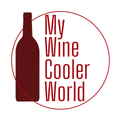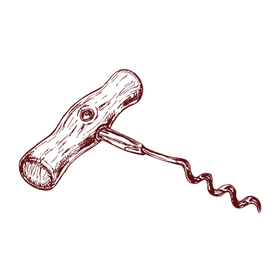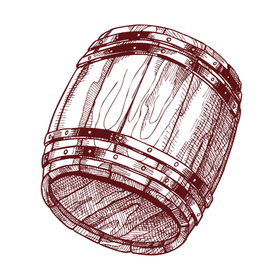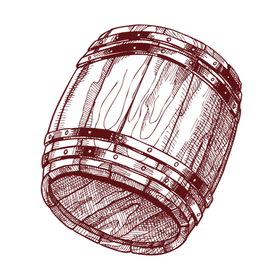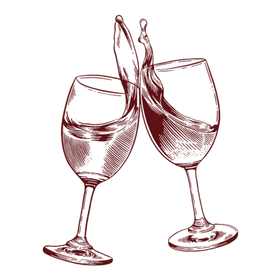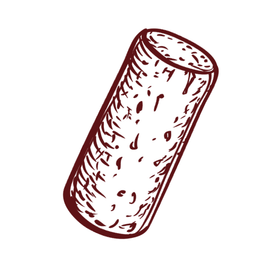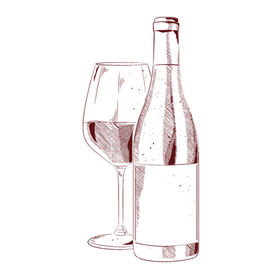Wine Cooler Buyer’s Guide
Introduction to Wine Coolers
Welcome to the world of wine coolers, an essential tool for any wine enthusiast. Whether you're a seasoned collector or just beginning to explore the vast and varied world of wines, understanding the role and benefits of a wine cooler is key to enhancing your wine experience.
Purpose and Benefits of a Wine Cooler
A wine cooler, also known as a wine refrigerator, is a specialized appliance designed for the optimal storage and aging of wine. Unlike regular beverages, wine is a living, evolving product. Its flavors, aromas, and characteristics change over time, influenced greatly by the conditions in which it's stored. Here's where a wine cooler comes in:
- Temperature Control: One of the most critical aspects of wine storage is maintaining a consistent and appropriate temperature. A wine cooler allows for precise temperature regulation, which is essential for preserving the delicate balance of flavors and aromas in wine.
- Humidity Management: Wines, especially those with cork closures, require a certain level of humidity to prevent the corks from drying out. Dry corks can lead to oxidation and spoilage of the wine. Wine coolers maintain an ideal humidity level, ensuring the longevity and quality of your wine.
- Protection from Light and Vibration: Exposure to light, particularly UV rays, can degrade and prematurely age wine. Similarly, vibrations can disrupt the sediments in wine, affecting its aging process. Wine coolers are designed to minimize light exposure and vibrations, creating a stable environment for the wine to mature gracefully.
- Organized Storage: Wine coolers offer a functional and organized way to store wine bottles, often with adjustable shelving to accommodate bottles of different sizes. This organization is not only aesthetically pleasing but also practical, making it easy to locate and retrieve your wines.
Wine Cooler vs. Regular Refrigerator
While a regular refrigerator can keep wine cool, it falls short in several key aspects compared to a wine cooler:
- Temperature Fluctuations: Regular refrigerators are designed for food preservation, which requires colder temperatures and frequent temperature fluctuations. These conditions are not ideal for storing wine, which thrives in a stable and slightly warmer environment.
- Humidity Levels: Refrigerators often lack the ability to regulate humidity to levels that are suitable for wine storage, leading to dried-out corks and oxidized wine.
- Storage Design: The shelving in a regular refrigerator is not designed to hold wine bottles, making it difficult to store them properly. Wine coolers, on the other hand, feature specialized racks that hold bottles horizontally, keeping the cork moist and ensuring optimal aging conditions.
- Vibration Control: Refrigerators often produce small but constant vibrations from their compressors, which can disturb the sediment in wine. Wine coolers are designed to minimize such vibrations.
In conclusion, a wine cooler is much more than a storage solution. It's an investment in the quality and enjoyment of your wine collection, providing the perfect environment for your wines to age and develop their full potential. Whether you're storing wine for short-term enjoyment or long-term aging, a wine cooler is an indispensable tool for any wine lover.
Understanding Wine Storage Needs
When venturing into the world of wine collection and preservation, understanding your specific wine storage needs is crucial. This understanding will not only influence your choice of wine cooler but also ensure that your wines mature in the best possible conditions.
Assessing Collection Size
- Current Collection: Start by taking an inventory of your current collection. Consider the number of bottles you have and the space they occupy. This gives you a baseline for the minimum capacity you need in a wine cooler.
- Future Growth: Think about your wine-buying habits. Are you likely to expand your collection significantly? If wine collecting is a growing interest, you might want to opt for a cooler with a larger capacity than your current collection necessitates. This foresight can save you from needing an upgrade too soon.
- Space Considerations: Assess the space you have available for a wine cooler in your home. This will help determine the size and type of cooler you can accommodate, whether it’s a compact unit or a larger, freestanding model.
Types of Wine and Their Storage Requirements
Different types of wines have varying storage requirements, which can impact your choice of wine cooler:
- Red Wines: Typically, red wines are stored at slightly warmer temperatures than white wines, usually around 55°F to 65°F. If you primarily collect red wines, a single-zone wine cooler that maintains this temperature range would suffice.
- White and Sparkling Wines: These are generally stored at cooler temperatures, between 40°F and 50°F. If your collection includes a significant number of white or sparkling wines, consider a cooler that can accommodate these lower temperatures.
- Mixed Collections: If you have a diverse collection that includes reds, whites, and sparklings, a dual-zone wine cooler might be ideal. These coolers have separate compartments with independent temperature controls, allowing you to store different types of wines at their optimal temperatures simultaneously.
Storage Duration: Short-Term vs. Long-Term
- Short-Term Storage: If you intend to consume your wine within a few months to a year, your primary concern should be keeping the wine at a consistent, appropriate temperature to ensure it remains in good condition until you’re ready to enjoy it.
- Long-Term Aging: For collectors looking to age wines over several years, factors like precise temperature control, humidity management, and protection from light and vibration become significantly more important. Long-term aging requires a stable environment where wines can develop complexity and character over time.
- Impact on Wine Cooler Choice: The intended storage duration influences the features you should look for in a wine cooler. For long-term aging, opt for a high-quality cooler with precise temperature and humidity control. For short-term storage, a basic model may suffice, provided it can maintain a consistent temperature.
In summary, understanding your wine storage needs – the size of your collection, the types of wines you prefer, and the duration you intend to store them – is vital in selecting the right wine cooler. This knowledge will guide you to a cooler that not only suits your current collection but also accommodates its growth and evolution, ensuring every bottle reaches its full potential.
Types of Wine Coolers
The variety of wine coolers available today can cater to every kind of wine enthusiast, from casual drinkers to serious collectors. Understanding the different types of wine coolers and their specific features is essential in selecting the right one for your needs.
Single-Zone vs. Dual-Zone Wine Coolers
Single-Zone Wine Coolers: These coolers have one temperature control and maintain a consistent environment throughout the unit. They are ideal for individuals who primarily collect one type of wine, either reds or whites, as they can be set to the optimal temperature for that specific type.- Benefits: Simplicity in operation and generally more cost-effective.
- Best For: Those with a preference for either red or white wine, not both.
- Benefits: Versatility in storing different types of wine at once.
- Best For: Wine enthusiasts with a diverse collection that includes both reds and whites.
Freestanding, Built-in, and Integrated Wine Coolers
Freestanding Wine Coolers: Designed to stand alone, these coolers offer flexibility in placement. They require adequate ventilation space around them, typically on the back and sides, to dissipate heat.- Space Requirement: Can be placed in any room but need clearance for air circulation.
- Best For: Those who have extra space and need a portable option.
- Space Requirement: Ideal for custom kitchens or bars where they can be seamlessly integrated into the cabinetry.
- Best For: Homeowners looking for a sleek, space-efficient solution that blends with their decor.
- Space Requirement: Requires precise measurements for a perfect fit within cabinetry.
- Best For: High-end home designs where aesthetics are as important as functionality.
Thermoelectric vs. Compressor-Based Coolers
Thermoelectric Wine Coolers:- Pros: Quieter and more energy-efficient than compressor models. They have fewer vibrations, which is better for the wine's aging process.
- Cons: Less effective in very warm environments and typically have a smaller capacity.
- Best For: Small collections and environments with controlled ambient temperatures.
- Pros: More powerful cooling capability, making them effective in a wider range of ambient temperatures. They can accommodate larger collections.
- Cons: Tend to be noisier and create more vibration compared to thermoelectric models.
- Best For: Larger collections and varied ambient conditions.
Each type of wine cooler has its specific advantages, and the best choice depends on your collection size, the types of wine you store, and your installation preferences. Whether you are looking for simplicity, versatility, aesthetic integration, or cooling efficiency, there is a wine cooler that will meet your needs.
Key Features to Consider in Wine Coolers
When selecting a wine cooler, there are several key features that you should consider to ensure your wine is stored under optimal conditions. These features not only impact the quality and longevity of your wine but also contribute to the convenience and enjoyment of your wine collection.
Temperature Control and Stability
- Importance of Temperature Range: The ideal temperature range for storing wine is typically between 45°F and 65°F, although this can vary based on the type of wine. Red wines generally require a slightly warmer temperature than whites or sparkling wines. Precise temperature control allows each wine to age at its proper rate and develop its full flavor profile.
- Consistent Temperature Maintenance: Fluctuations in temperature can accelerate aging and damage the wine. A quality wine cooler will maintain a stable temperature, even in varying ambient conditions, to protect the integrity of the wine over time.
Humidity Control
- Maintaining Proper Humidity Levels: Ideal humidity levels in a wine cooler should be between 50% and 70%. This range is crucial to prevent corks from drying out. A dry cork can shrink, allowing air to seep into the bottle and spoil the wine. Conversely, too much humidity can promote mold growth. Good wine coolers are equipped with systems to maintain this balance.
UV Protection and Vibration Control
- UV-Protected Glass: Exposure to UV rays can degrade and prematurely age wine, altering its flavor and color. Wine coolers with UV-protected glass doors shield the wine from harmful light while allowing visibility into the collection.
- Low-Vibration Design: Vibrations can disturb the sediment in wine, affecting its natural aging process. Quality wine coolers are designed to minimize vibration, often using advanced cooling technology and sturdy construction to ensure the wine remains undisturbed.
Shelving and Capacity
- Shelving Options: Adjustable and sliding shelves provide flexibility for different bottle sizes and shapes. Consider coolers with sturdy shelving that can support the weight of full bottles and allow for easy access.
- Capacity Considerations: The capacity of a wine cooler should align with your collection size and growth. Coolers range from small units holding a dozen bottles to large units capable of storing hundreds. Think about both your current collection and future additions.
Energy Efficiency and Noise Level
- Energy Consumption: Energy-efficient wine coolers not only reduce electricity costs but also are better for the environment. Look for coolers with energy-saving features like LED lighting and efficient cooling systems.
- Operational Noise: The noise level of a wine cooler is an important consideration, especially if it will be placed in living areas. Compressor-based coolers tend to be noisier than thermoelectric ones, though advancements have reduced noise levels in many models.
In summary, the key features of temperature control, humidity management, UV protection, vibration control, shelving flexibility, capacity, energy efficiency, and noise level are all critical in choosing the right wine cooler. These features ensure that your wine is stored in the best possible environment, preserving its quality and enhancing your enjoyment of each bottle.
Design and Aesthetics of Wine Coolers
While the primary function of a wine cooler is to preserve and age your wine under ideal conditions, its design and aesthetics are also important. The right wine cooler not only adds functionality to your space but can also enhance its overall appeal.
Size and Dimensions
- Choosing the Right Size: The size of your wine cooler should align with both your collection size and the available space in your home. Compact units are perfect for small collections or limited spaces, easily fitting on countertops or under tables. For larger collections, consider freestanding models that offer greater capacity. Measure the intended space for the cooler, ensuring enough clearance for ventilation, especially for built-in models.
- Capacity and Collection: Estimate the number of bottles you currently have and how much you expect your collection to grow. Wine coolers range from small units holding around 20 bottles to large units that can store hundreds. It's often advisable to choose a cooler with a slightly larger capacity than your current collection to accommodate future acquisitions.
Exterior Design
- Style Variations: Wine coolers come in a variety of styles to match your home decor. From modern and sleek designs with stainless steel finishes to classic wood-front coolers that exude traditional elegance, there's a style for every aesthetic.
- Finish Options: The finish of your wine cooler can significantly impact its look. Popular options include brushed stainless steel, black stainless steel, glass, and custom panel-ready finishes that can be matched to your cabinetry. Consider the overall color scheme and design theme of your space when choosing the finish.
- Door Design: The door of the wine cooler is another design element. Some coolers feature glass doors for easy viewing of your collection, while others have solid doors for a more understated look. Tinted glass doors offer UV protection while still showcasing your wines.
Interior Lighting
- Functionality: Interior lighting in a wine cooler is not just practical, allowing you to view and select your wines easily, but also adds to the display appeal. It should provide enough illumination without producing heat that could affect the wine's environment.
- Aesthetic Appeal: LED lighting is a popular choice in wine coolers for its energy efficiency and minimal heat emission. Some coolers come with customizable lighting options, allowing you to choose the color or intensity of the light, which can add a dramatic effect to your wine display.
- Ambiance: The lighting of a wine cooler can significantly contribute to the ambiance of a room. Soft, subtle lighting can create an elegant display, turning your wine collection into a focal point of your space.
In conclusion, when considering the design and aesthetics of a wine cooler, it's important to balance size and capacity with the style and finish that complement your home. The right wine cooler should not only be functional in preserving your collection but also a reflection of your personal style and a beautiful addition to your living space.
Installation and Placement of Wine Coolers
Choosing the right location and properly installing your wine cooler are crucial steps to ensure its optimal performance and longevity. The placement not only affects how well the cooler operates but also how it integrates with your living space.
Where to Place Your Wine Cooler
- Avoid Heat Sources and Direct Sunlight: Position your wine cooler away from heat sources such as ovens, stoves, and direct sunlight. Exposure to heat can cause the cooler to work harder to maintain the set temperature, potentially affecting its efficiency and the wine's quality.
- Consider Ambient Temperature: Wine coolers operate best in environments with stable room temperatures. Extremely cold or hot ambient temperatures can strain the cooler’s system. Ideal room temperatures for placing a wine cooler are typically between 60°F and 80°F.
- Stable, Level Surface: Ensure that the cooler is placed on a stable and level surface. This helps prevent vibrations that can disturb the wine and ensures the cooler operates efficiently.
- Adequate Ventilation: For freestanding models, leave sufficient space around the cooler, especially at the back and sides, for air circulation. This prevents overheating and helps maintain consistent internal temperatures.
Installation Requirements for Built-in and Integrated Models
- Ventilation Needs: Built-in and integrated wine coolers often require front ventilation. Ensure that there’s enough space in the cabinetry for air intake and exhaust. Failing to provide proper ventilation can lead to overheating and malfunction.
- Exact Measurements: Integrated models are designed to fit seamlessly within cabinetry, so precise measurements are crucial. Double-check the dimensions of both the cooler and the available space to ensure a perfect fit. Consider any hinges or handles that might affect the dimensions.
- Electrical Requirements: Verify that your kitchen or installation area has the appropriate electrical requirements for your wine cooler. Most coolers run on standard home outlets, but it’s important to check the voltage and amperage requirements.
- Professional Installation: For built-in and integrated models, consider professional installation to ensure that the unit is properly ventilated, level, and securely placed. This can also be helpful in navigating any electrical or cabinetry modifications needed.
- Accessibility and Convenience: Think about how often you'll access the cooler and place it accordingly. Built-in coolers under kitchen counters or in home bars are convenient for frequent use.
In summary, the correct placement and installation of your wine cooler are as important as selecting the right model. By following these guidelines, you can ensure that your wine cooler not only performs optimally but also fits beautifully and functionally within your home environment.
Maintenance and Care of Wine Coolers
Proper maintenance and care are crucial for the longevity and efficiency of your wine cooler. Regular upkeep not only ensures optimal performance but also extends the life of your appliance. Here's a guide to maintaining your wine cooler effectively.
Cleaning and Upkeep
Interior Cleaning:- Frequency: Clean the interior of your wine cooler every 3 to 6 months, or more often if needed.
- Steps: Unplug the cooler and remove all bottles. Use a mild detergent mixed with warm water to wipe down the interior walls, shelves, and door seal. Avoid harsh chemicals or abrasive cleaners that might damage the interior.
- Drying: After cleaning, wipe the surfaces with a dry cloth and leave the door open to air dry completely before restocking your wine.
- Regular Dusting: Wipe the exterior with a soft cloth to remove dust and fingerprints. For stainless steel finishes, use a cleaner designed for stainless steel to avoid streaks.
- Door Glass: If your cooler has a glass door, use a glass cleaner to keep it clear and smudge-free.
- Location and Care: For coolers with exposed condenser coils (usually at the back or bottom), clean them every 6 to 12 months to ensure efficient operation. Dust and lint can accumulate on the coils, affecting performance.
- Cleaning Process: Use a vacuum cleaner with a brush attachment to gently remove dust from the coils.
- Inspection: Check the door seal regularly for any signs of wear or tear. A loose or damaged seal can lead to temperature fluctuations.
- Cleaning: Wipe down the seal with a mild detergent solution to keep it clean and ensure it is sealing properly.
Troubleshooting Common Issues
Temperature Irregularities:- Check: Ensure the cooler is not placed near heat sources and that the door is sealing properly.
- Thermostat Adjustment: If the temperature fluctuates, try adjusting the thermostat. Consult the manual for specific instructions.
- Leveling: Make sure the wine cooler is level. An uneven cooler can cause vibrations and noise.
- Loose Components: Check for any loose parts or bottles that might be vibrating against shelves.
- Bulb Replacement: If your cooler has an interior light that is not working, it may need a new bulb. Use the specific type recommended by the manufacturer.
- Electrical Connection: Check if the cooler is properly plugged in and if the outlet is functioning.
- Circuit Breaker: Look for tripped circuit breakers or blown fuses in your home’s electrical panel.
- Door Seal: Inspect the door seal for any gaps or damage.
- Humidity Control: Adjust the humidity settings if your cooler has this feature.
Regular maintenance and prompt attention to any issues not only keep your wine cooler running efficiently but also protect your valuable wine collection. For more complex problems, consult the manufacturer’s manual or contact a professional technician. Remember, taking good care of your wine cooler is an integral part of enjoying and preserving your wine collection.
Budget Considerations for Wine Coolers
When investing in a wine cooler, it's important to consider not only the initial purchase price but also the long-term cost of ownership. Understanding the various pricing tiers and what features you can expect at each level will help you make an informed decision that aligns with both your needs and your budget.
Price Range and Value
Entry-Level Wine Coolers (Budget-Friendly):- Price Range: Typically under $300.
- Features: Basic single-zone cooling, limited capacity (usually up to 20 bottles), thermoelectric cooling or basic compressor systems, and standard shelving.
- Best For: Casual wine drinkers or those with a small collection.
- Price Range: Between $300 and $1000.
- Features: Dual-zone temperature control, larger capacity (up to 50 bottles), improved shelving options, digital temperature controls, and moderate energy efficiency.
- Best For: Wine enthusiasts with a growing collection and a desire for more features.
- Price Range: Over $1000.
- Features: Advanced temperature and humidity control, large capacity (50+ bottles), premium build quality, vibration reduction, UV-protected glass doors, sophisticated design options, and smart/connected features.
- Best For: Serious collectors and connoisseurs who require precise storage conditions and are willing to invest in premium features.
Cost of Ownership
- Energy Efficiency: Look for wine coolers with energy-efficient features such as LED lighting and energy-saving cooling systems. Energy Star-rated models can significantly reduce electricity costs over the lifetime of the cooler.
- Maintenance Costs: Factor in potential maintenance expenses such as replacing filters or repairing parts. Higher-end models may have higher maintenance costs but often come with longer warranties.
- Operational Costs: Consider the cost of operating the cooler, including electricity usage. Compressor-based coolers generally consume more power than thermoelectric ones.
Additional Accessories
- Shelving Upgrades: Some coolers allow for shelving customization, which can add to the cost but offers better organization and storage options.
- Temperature and Humidity Monitors: External monitors and sensors can provide more precise control over the storage environment.
- Extended Warranties: These can offer peace of mind but will add to the initial cost.
In summary, when choosing a wine cooler, it's important to balance the upfront cost with the expected features and long-term operational expenses. By carefully considering your current and future needs, you can select a wine cooler that offers the best value within your budget and ensures that your wine collection is preserved under optimal conditions.
Additional Accessories
Enhancing your wine cooler with the right accessories can improve its functionality and efficiency. Here are some useful add-ons that can complement your wine cooler and elevate your wine storage experience.
Additional Racks and Shelving:- Purpose: Maximize storage space and organize your collection more efficiently.
- Types: Adjustable racks for different bottle sizes, sliding shelves for easy access, and display racks for showcasing specific bottles.
- Benefits: Customizable storage solutions to fit various bottle shapes and sizes, allowing for optimal use of space within the cooler.
- Purpose: Maintain the cleanliness and hygiene of your wine cooler.
- Types: Specialized cleaning solutions designed for wine coolers that are gentle on surfaces and effective in removing stains and odors.
- Benefits: Keeping the cooler clean not only ensures a visually appealing display but also prevents any odors from affecting the wine's flavor.
- Purpose: Monitor the internal temperature and humidity levels of your wine cooler.
- Types: Digital or analog devices that can be placed inside the cooler for real-time monitoring.
- Benefits: Ensures that the wine cooler is maintaining the ideal conditions for wine preservation. Particularly useful for models without built-in digital displays.
- Purpose: Reduce any additional vibrations that could potentially disturb the sediment in the wine.
- Types: Mats or pads designed to absorb vibrations, placed under the wine cooler.
- Benefits: Essential for preserving the integrity of the wine, especially for long-term aging.
- Purpose: Further protect wines from harmful UV rays, especially in coolers placed in well-lit areas.
- Types: Adhesive films that can be applied to the glass doors of the wine cooler.
- Benefits: An additional layer of protection against light exposure, helping to maintain the quality and longevity of your wine.
- Purpose: Provide security for your wine collection, especially important for collectors or in households with children.
- Types: Built-in locks or aftermarket lock kits suitable for different cooler models.
- Benefits: Safeguards your valuable collection and restricts access as needed.
- Purpose: Keep your wine cooler operating efficiently.
- Types: Spare parts like fans, filters, and bulbs.
- Benefits: Handy for quick replacements, ensuring minimal downtime of the cooler.
By choosing the right accessories for your wine cooler, you can not only enhance its performance and appearance but also ensure that your wine collection is stored in the best possible condition. Whether it’s for organization, monitoring, or maintenance, these accessories are valuable additions for any wine enthusiast.
Summary
Investing in a wine cooler is an important decision for any wine enthusiast. It's not just about storing your wine; it's about creating the ideal environment for your collection to mature and develop its full potential. The right wine cooler can make a significant difference in preserving the flavor, aroma, and quality of your wines. Remember to consider:
- The Size and Capacity of the cooler based on your current and anticipated collection.
- Temperature Control and Stability for optimal wine preservation.
- Humidity Control to maintain cork integrity and prevent oxidation.
- UV Protection and Vibration Control to protect wine from external factors.
- Energy Efficiency and Noise Levels for sustainable and convenient operation.
- Design and Aesthetics that complement your living space.
- Installation Requirements and Placement for optimal performance.
- Maintenance and Upkeep for long-term efficiency and effectiveness.
- Budget Considerations, balancing initial cost with features and long-term operational expenses.
- Additional Accessories that enhance functionality and preservation.
Decision-Making Checklist
Use this checklist to guide your final decision on purchasing a wine cooler:
-
Assess Your Wine Collection:
- Determine the size of your current collection and potential growth.
- Consider the types of wine you need to store (red, white, sparkling).
-
Space and Placement:
- Measure the space where you intend to place the wine cooler.
- Decide between freestanding, built-in, or integrated based on available space.
-
Features and Functionality:
- Choose between single-zone or dual-zone based on your wine variety.
- Ensure the chosen cooler has adequate temperature and humidity control.
- Opt for UV-protected glass and low-vibration design if long-term aging is a priority.
-
Design Preferences:
- Select a design and finish that matches your home décor.
- Decide on the type of shelving and interior lighting you prefer.
-
Operational Aspects:
- Check for energy efficiency ratings.
- Consider the noise level if the cooler will be placed in a living space.
-
Budget and Value:
- Determine your budget range.
- Compare features available in different price ranges.
- Factor in the long-term costs of operation and maintenance.
-
Additional Accessories:
- Consider purchasing additional racks, a thermometer, or other accessories.
-
Read Reviews and Seek Recommendations:
- Look for reviews and ratings of the models you are considering.
- Seek recommendations from wine communities or experts if possible.
By methodically going through this checklist, you can ensure that you select a wine cooler that not only meets your current needs but also adapts to your future wine collecting journey. A well-chosen wine cooler is an investment in the enjoyment and preservation of your wine collection for years to come.
In your journey to find the perfect wine cooler, remember that it's more than just an appliance; it's a guardian of your cherished wine collection, an enhancer of your wine experiences, and a reflection of your passion for wine. Take your time to consider the factors outlined in this guide, and feel confident that you are well-equipped to make the best choice.
We invite you to explore our store, My Wine Cooler World, where we have curated a selection of wine coolers that cater to every need and preference. Whether you are a novice enthusiast or a seasoned collector, you'll find a cooler that fits your space, complements your lifestyle, and meets your wine preservation requirements. Start your journey to perfect wine preservation here and discover the ideal wine cooler that awaits you in our collection.
